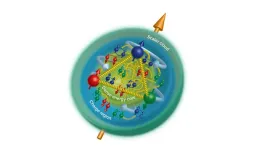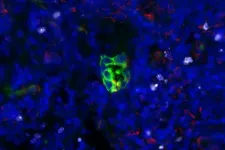At a glance:
Who were the people of the medieval Swahili civilization? Ancient DNA reveals African founders intermingled with migrants from southwest Asia around 1000 CE
Findings complicate scientific views as well as colonial-era beliefs
For the first time, analyses determine that some present-day Kenyans who identify as Swahili are genetically very different from medieval residents of the same region, while others have retained substantial medieval ancestry
While serfs toiled and knights jousted in Europe and samurai and shoguns rose to power in Japan, the medieval peoples of the Swahili civilization on the coast of East Africa lived in multicultural, coral-stone towns and engaged in trade networks spanning the Indian Ocean.
Archaeologists, anthropologists, and linguists have been locked in a century-long debate about how much people from outside Africa contributed to Swahili culture and ancestry. Swahili communities have their own histories, and evidence points in multiple directions.
The largest-yet analysis of ancient DNA in Africa, which includes the first ancient DNA recovered from members of the Swahili civilization, has now broken the stalemate.
The study reveals that a significant number of people from Southwest Asia moved to the Swahili coast in medieval and early modern times and had children with the people living there. Yet the research also shows that hallmarks of the Swahili civilization predated those arrivals.
“Archaeological evidence overwhelmingly showed that the medieval Swahili civilization was an African one, but we still wanted to understand and contextualize the nonlocal heritage,” said co-senior author Chapurukha Kusimba, professor of anthropology at the University of South Florida.
“Taking a genetics pathway to find the answers took courage and opened doors beyond which lie answers that force us to think in new ways,” he said.
The analyses, published online March 29 in Nature, included the newly sequenced ancient DNA of 80 individuals from the Swahili coast and inland neighbors dating from 1300 CE to 1900 CE.
They also included new genomic sequences from 93 present-day Swahili speakers and previously published genetic data from a variety of ancient and present-day eastern African and Eurasian groups.
The international team was led by Kusimba and David Reich, professor of genetics in the Blatavnik Institute at Harvard Medical School and professor of human evolutionary biology at Harvard University.
Mixing between Asia and Africa
The study revealed that around 1000 CE, a stream of migrants from Southwest Asia intermingled with African people at multiple locations along the Swahili coast, contributing close to half of the ancestry of the analyzed ancient individuals.
“The results provide unambiguous evidence of ongoing cultural mixing on the East African coast for more than a millennium, in which African people interacted and had families with immigrants from other parts of Africa and the Indian Ocean world,” said Reich.
The study confirmed that the bedrock of Swahili culture remained unchanged even as the newcomers arrived and Islam became a dominant regional religion, said Kusimba; the primary language, tomb architecture, cuisine, material culture, and matrilocal marriage residence and matriarchal kinship remained African and Bantu in nature.
The findings contradict one widely discussed scholarly view, which held that there was little contribution from foreigners to Swahili peoples, the authors said.
The researchers added that the findings also refute a diametrically opposed viewpoint prevalent in colonial times, which held that Africans provided little contribution to the Swahili towns.
“Ancient DNA allowed us to address a longstanding controversy that could not be tested without genetic data from these times and places,” Reich said.
The researchers found that the initial waves of newcomers were mainly from Persia. These findings align with the oldest Swahili oral stories, which tell of Persian (Shirazi) merchants or princes arriving on the Swahili shores.
“It was exciting to find biological evidence that Swahili oral history probably depicts Swahili genetic ancestry as well as cultural legacy,” said Esther Brielle, research fellow in genetics in the Reich lab.
Brielle is co-first author of the paper with Stephanie Wynne-Jones at the University of York and Jeffrey Fleisher at Rice University.
After about 1500 CE, ancestry sources became increasingly Arabian. In later centuries, intermingling with other populations from Asia and Africa further changed the genetic makeup of Swahili-coast communities.
Ancestry contributions from women from India
Analyses also showed that the initial stream of migrants had about 90 percent ancestry from Persian men and 10 percent ancestry from Indian women.
Although South Asian-associated artifacts are well documented at Swahili archaeological sites and Indian words have been integrated into Swahili, “no one had previously hypothesized an important role for Indian people in contributing to the populations of the medieval Swahili towns,” said Reich.
Extreme sex differences in genetic contributions
The predominant groups that contributed to Swahili-coast populations during the initial influx in 1000 CE were male Persians and female Africans. Similar genetic signatures of sex imbalances in other populations around the world sometimes indicate that incoming men forcibly married local women, but that scenario does not align with the tradition of matriarchal Swahili societies, the authors said.
A more likely explanation, said Reich, is that “Persian men allied with and married into local trading families and adopted local customs to enable them to be more successful traders.”
The authors say their hypothesis is supported by the fact that the children of Persian fathers and Swahili-coast mothers passed down the language of their mothers and that the region’s matriarchal traditions did not change even after locals settled down with people from traditionally patriarchal regions in Persia and Arabia and practiced the Islamic religion of their male ancestors.
Genetics and identity
The team found that the proportion of Persian-Indian ancestry has decreased among many people of the Swahili coast in the last several centuries. Many among those in present-day Kenya who identify as Swahili and had their genomes analyzed were “genetically very different” from the people who lived in the region during medieval times, the authors found, while others retained substantial medieval ancestry.
“These results highlight an important lesson from ancient DNA: While we can learn about the past with genetics, it does not define present-day identity,” said Reich.
Decolonizing history
In addition to helping to diversify the populations included in ancient DNA research, the study pushes back against “a profoundly difficult history” of more than 500 years of colonization in this region of Africa, which continues to be a major problem today, said Reich.
“The story of Swahili origins has been molded almost entirely by non-Swahili people,” he said.
The study results “contradict and complicate” narratives advanced in archaeological, historical, and political circles, said Kusimba, who has spent 40 years working to recover the Swahili past and to address injustices experienced by descendants of the Swahili civilization.
from USF about the controversies surrounding interpretation of the Swahili civilization and the value of productive collaboration among archaeologists, geneticists, and local communities.
Funding, authorship, disclosures
A full list of authors can be found in the paper.
The study was funded by EMBO, National Museums of Kenya and the Republic of Kenya, Field Museum of Natural History, U.S. National Science Foundation (SBR 9024683, BCS 9615291, BCS0106664, BCS 0352681, BCS 0648762, BCS 1030081, BCS 1123091), U.S. National Endowment for the Humanities, U.S. IIE J. W. Fulbright Sr. Scholars Program, National Geographic Society, division of antiquities of the Ministry of Natural Resources and Tourism in Tanzania, Arts and Humanities Research Council (AH/J502716/1), MAGE consortium, U.S. National Institutes of Health (grant HG012287), John Templeton Foundation (grant 61220), the Allen Discovery Center program, a Paul G. Allen Frontiers Group advised program of the Paul G. Allen Family Foundation, and a gift from J.-F. Clin. Reich is an Investigator of the Howard Hughes Medical Institute.
END


